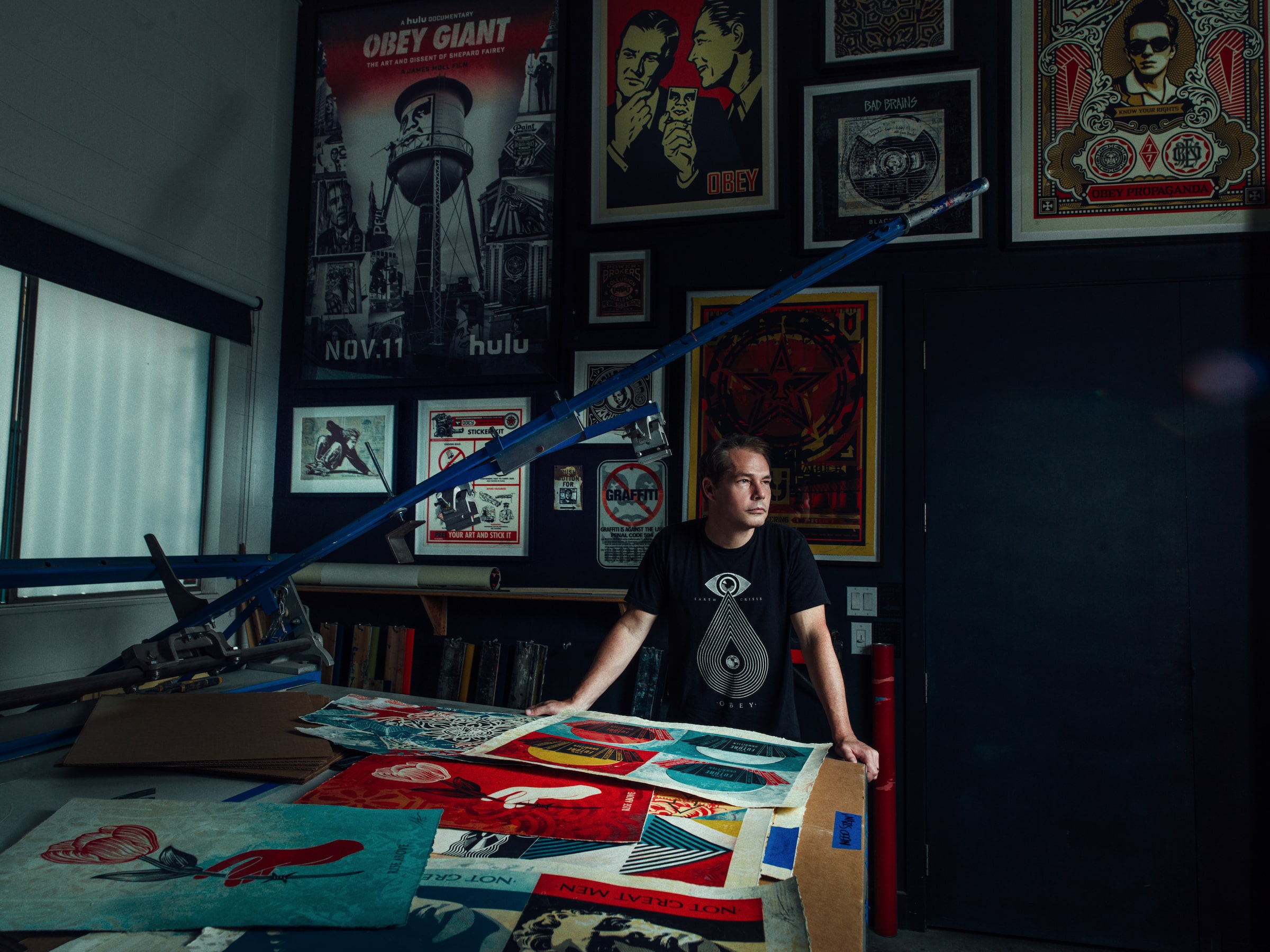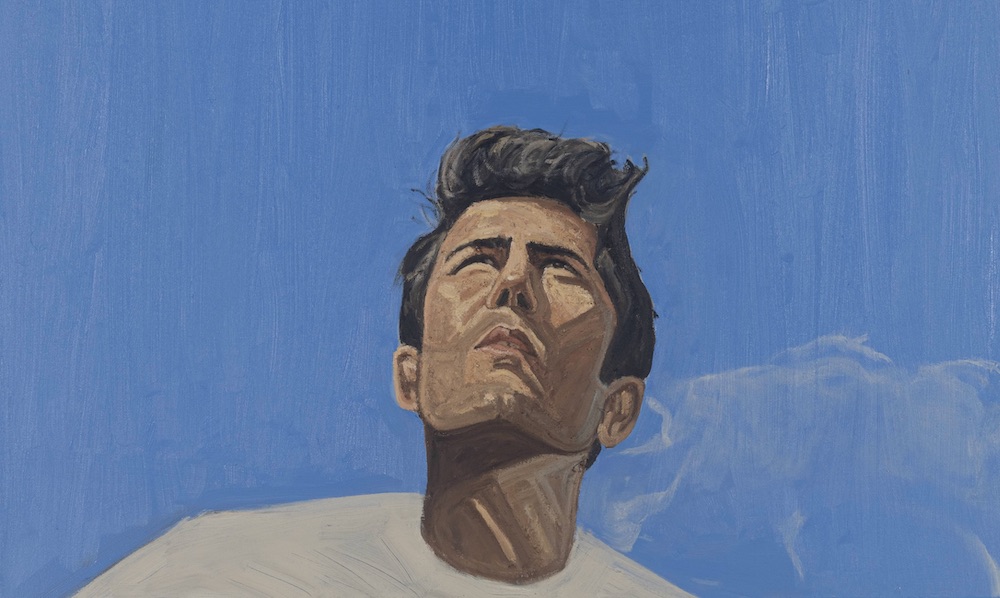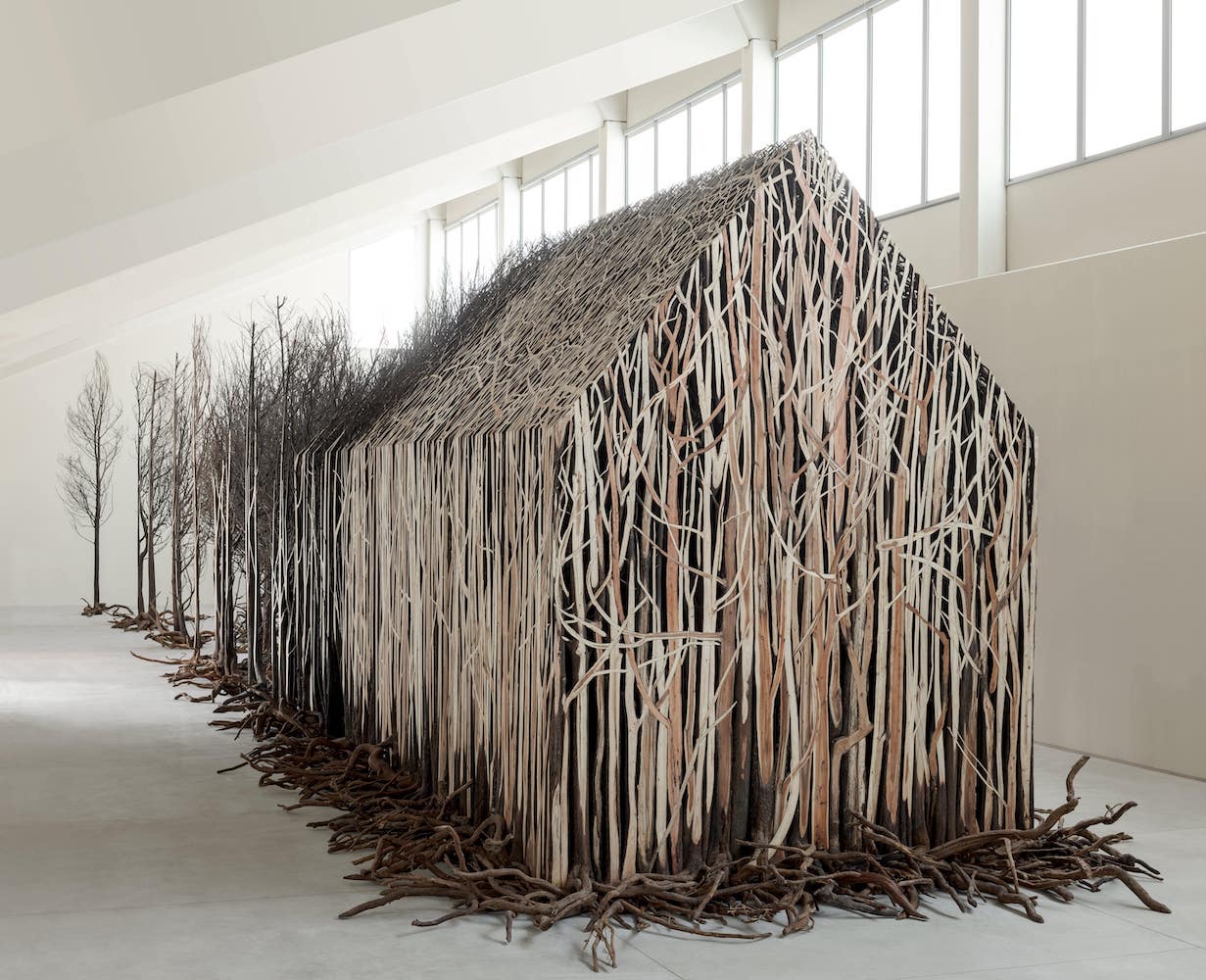Akris’s creative director discusses the exhibition “Akris. Fashion. selbstverständlich” at the Museum für Gestaltung Zürich.
This summer, “Akris. Fashion. selbstverständlich” is on view at the Museum für Gestaltung Zürich in Switzerland. The major survey show looks at the creative process of Akris’s creative director Albert Kriemler, through collections dating from 2009 to 2022, in direct dialogue with the art, artists, and architects that inspired him. It is the first time that fashion and art have been shown together within the museum, promising an immersive, interactive experience curated by Kriemler and the Museum für Gestaltung Zürich’s Karin Gimmi.
Kriemler, whose grandmother Alice founded the brand with an apron for the modern woman back in 1922 in St. Gallen, had one rule in putting together the show—that it would follow none of the rules of a typical fashion exhibition. Garments are meant to be worn, felt, and seen in motion. And that notion is explored and then some in this unique, multi-room, large-scale installation.
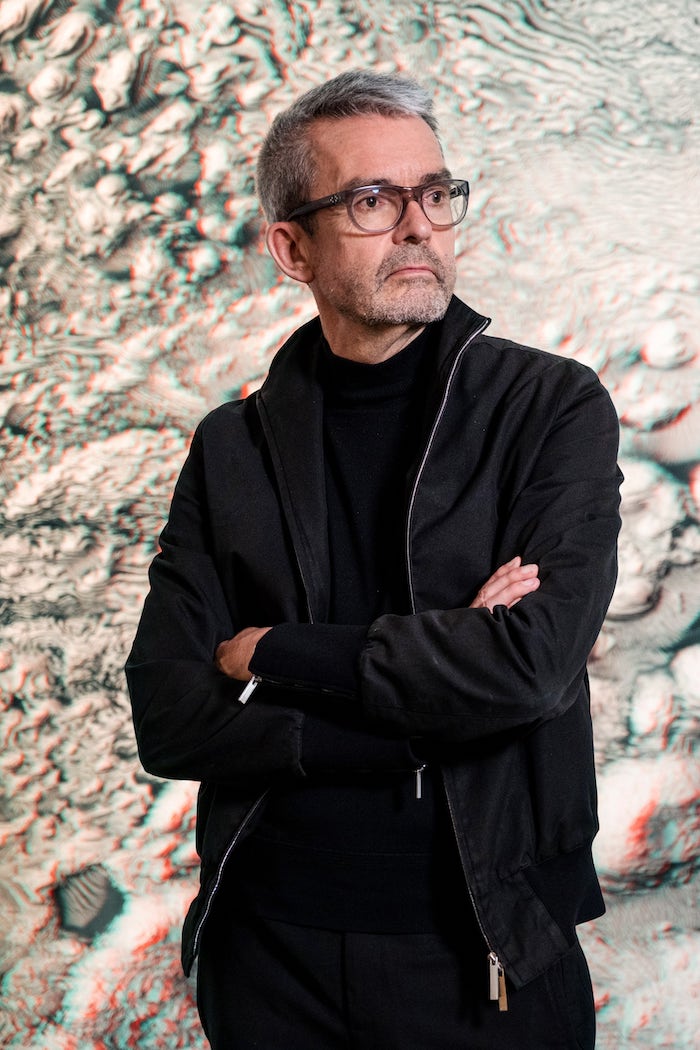
Albert Kriemler, portrait courtesy of Akris.
Kriemler is known for creating timeless silhouettes that are handcrafted by expert tailors, seamless in fit, feel at ease against the body, and look effortlessly smart on their wearer out in the world. His signature trapezoidal shape and nod to the letter A (Alice, Apron, Albert, Akris)—in skirts, dresses, jackets, closures, zippers—is the entry point to the show, with punctuations found throughout the galleries. The creative director’s deft knowledge of and affinity for color and textiles, especially thanks to Akris’s archive of fabrics dating back to the 1940s, is on display, in some instances even allowing for visitors to touch (please do!) and try on (perhaps a first for a museum!). Tribute is paid to the house’s home in St. Gallen as well, exploring the experience of the atelier where longtime masters of their work—pattern makers, tailors, model makers, and designers—come together to develop each collection. It’s a place Kriemler describes with great love and gratitude for the freedom he feels there.
The exhibition unfolds across several themes, including a major focus on Kriemler’s ongoing dialogue with other creatives. The list is impressive, including names like Imi Knoebel, Carmen Herrera, Ian Hamilton Finlay, Thomas Ruff, Sou Fujimoto, Geta Brătescu, Reinhard Voigt, and more. Visitors will see that the artists’ work and conversations with Kriemler did not simply serve as inspiration, but often expanded into collaboration and even experimentation in technique and craft.
“Akris. Fashion. selbstverständlich” opens just after the house celebrated 100 years. But as Kriemler told us earlier this spring, this is not a retrospective. It embodies that titular German word, selbstverständlich, which translates, as Kriemler describes it as an “effortlessly compelling modernity.” Speaking with Whitewall about the exhibition, Kriemler was already looking ahead to the next collection, the next chapter for Akris, what selbstverständlich will mean for 2024 and beyond.
WHITEWALL: What was the starting point for this exhibition for you? How did your experience of working on your first exhibition, in 2006 at the Museum of Textiles of St. Gallen, inform what you wanted to do this time?
ALBERT KRIEMLER: Clothes live because they are worn by a human being. For the first exhibition, I wanted to do an exciting exhibition on clothing. Every room was new and different. You went from a torso to a mannequin, to hanging clothes on a rack, to hanging them in the air like a mobile.
Here in Zurich, it was a different approach. It’s the whole museum. This is a statement. It’s a design museum that speaks to design aficionados. In Switzerland, showing art and fashion together is a new type of thing, and I always like when we can do something first. We had just done our 100 year book, so this exhibition should have another focus. It shows what we’ve succeeded in doing in the last 20 years out of St. Gallen.
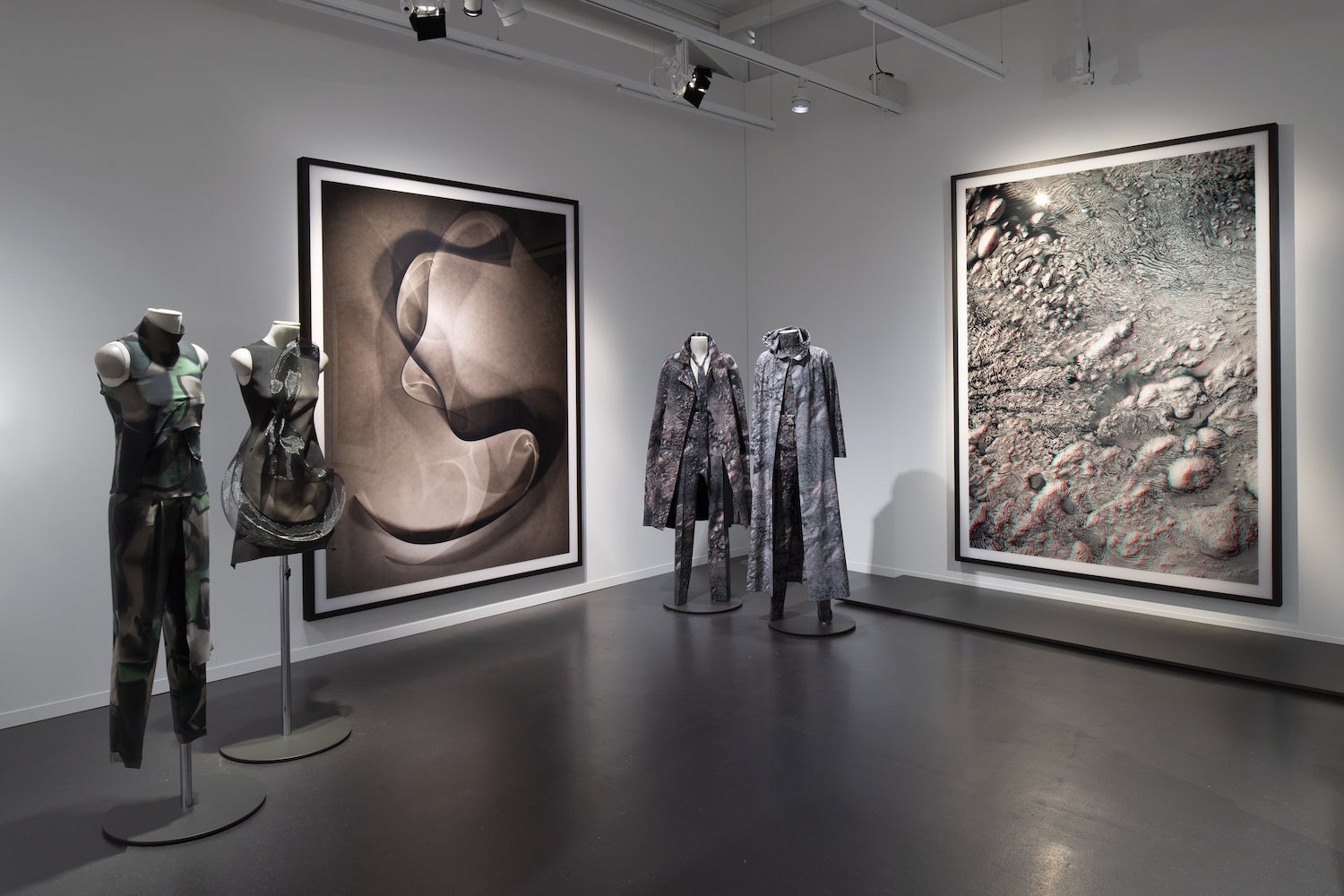
Installation view of “Exhibition Akris. Mode. selbstverständlich” at Museum für Gestaltung Zürich, May 12–September 24, 2023, photo by Regula Bearth, © ZHdK.
WW: How did you want to address Akris’s roots in St. Gallen and your headquarters, your atelier there?
AK: St. Gallen is where I feel at home. It’s my studio, where I am completely free, where I can come up with ideas. I learned this from working with Romanian artist Geta Brătescu, who told me, “My studio is my freedom, nobody disturbs me here, I can do what I want.” I have my masters here in St. Gallen, my tailors here, my assistant designers with me. It’s where I can develop courage because I know my roots.
Fashion is not a single designer’s view. It’s a full concept. The architect Robert Mallet-Stevens said his own architecture is only as good as the work of his collaborators, if he gets the same level of engagement of the next creative working on it. It’s much more a “we” than “me.” This is exactly why I can succeed, because of my tailors and masters who have been with me for 20-plus years. I can completely trust in their creativity to finalize my new silhouette.
Our fabric archive goes back to the 1940s, which is unique. My grandmother and my father decided in the forties to archive their leftover fabrics, instead of selling them, because they invested so much time in their selection. They were proud of their ability and knowledge of fabrics. And today my team and I can go even back to the forties to choose fabrics and colors.
When I’m developing a collection, I’m sure I can find something that I need there, or I can get inspired by a certain print or embroidery. That’s what it means to have roots and a lasting power in St. Gallen.
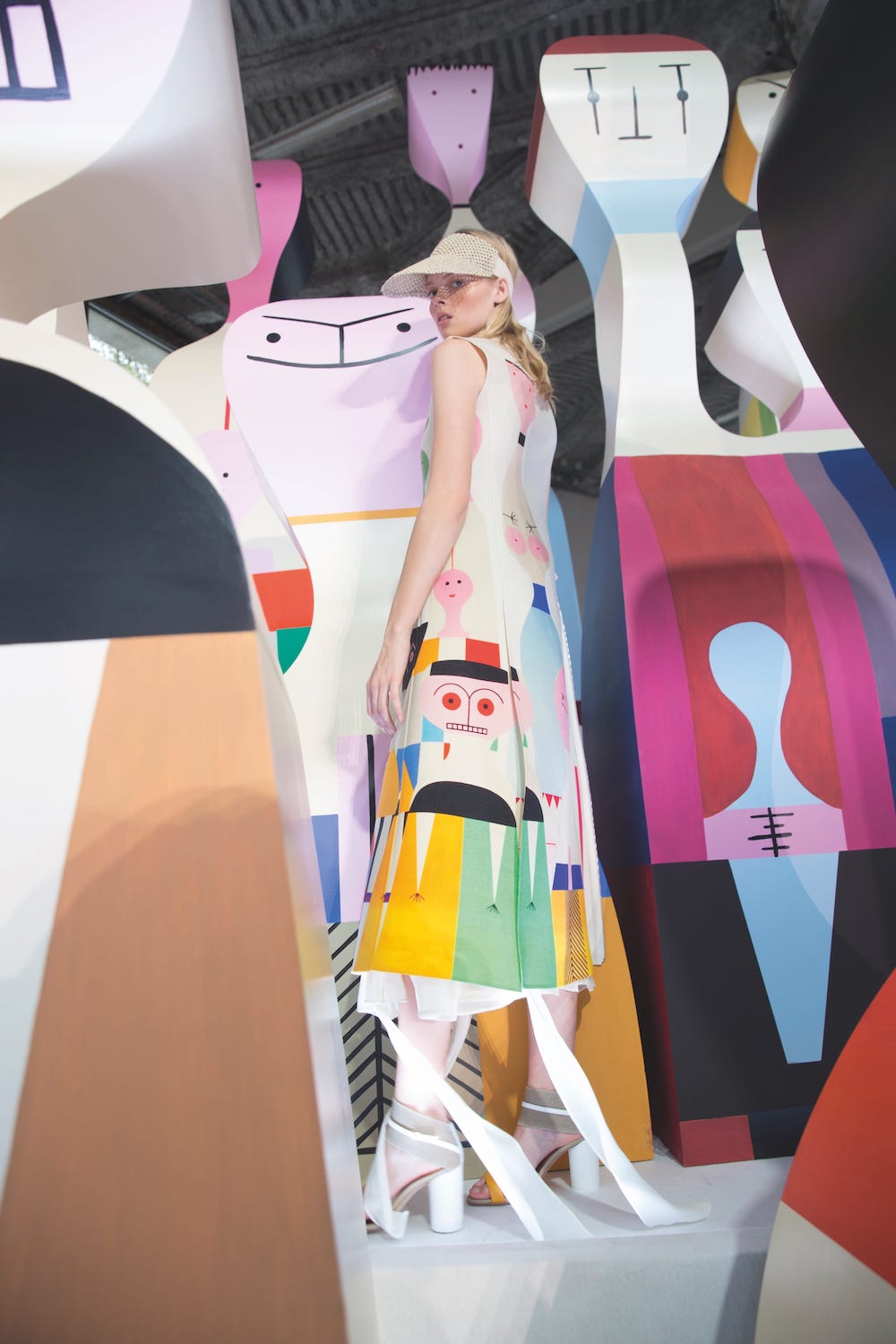
Akris, Albert Kriemler x Alexander Girard, Wooden Dolls, print, editorial, Spring/Summer 2018, photo © Bon Wongwannawat, courtesy of Akris.
WW: After celebrating 100 years of Akris, what did you want this exhibition to say?
AK: The vision of the exhibition was to celebrate the years since we started showing our collection in Paris, especially the art or architecture-inspired ones. Recognizing 100 years is more of a chance to realize where we have come in three generations. It’s wonderful to pause, to look back, and then ask, “What’s next?” Moving forward is important to me.
WW: You have collaborated with so many creatives and artists, as you mentioned—Carmen Herrera, Thomas Ruff, Sou Fujimoto, to name a few. And the exhibition places art alongside fashion for the first time in the museum. How will we see that all come together in dialogue?
AK: You normally just see the final looks on the runway in a totally different atmosphere. But here, in the museum, they are placed next to their original inspiration, so people maybe get a better understanding of the magnetism they had on me. Why they sparked a design, a new fabric or technique. I want visitors to experience the same. And I wanted to show them what innovation can come out of it, this is not just us printing a photo of an artwork on a garment, it goes much deeper. It rests on a fundamental respect for the artist and an understanding of their work, yet it in addition there is always something I add to it, like taking the squares of Reinhard Voigt’s paintings as an idea to develop asymmetrical dresses, sewn together from two printed fabric squares. Or the series “Sterne (Stars)” by Thomas Ruff that led to the development of a totally new blinking LED embroidery.
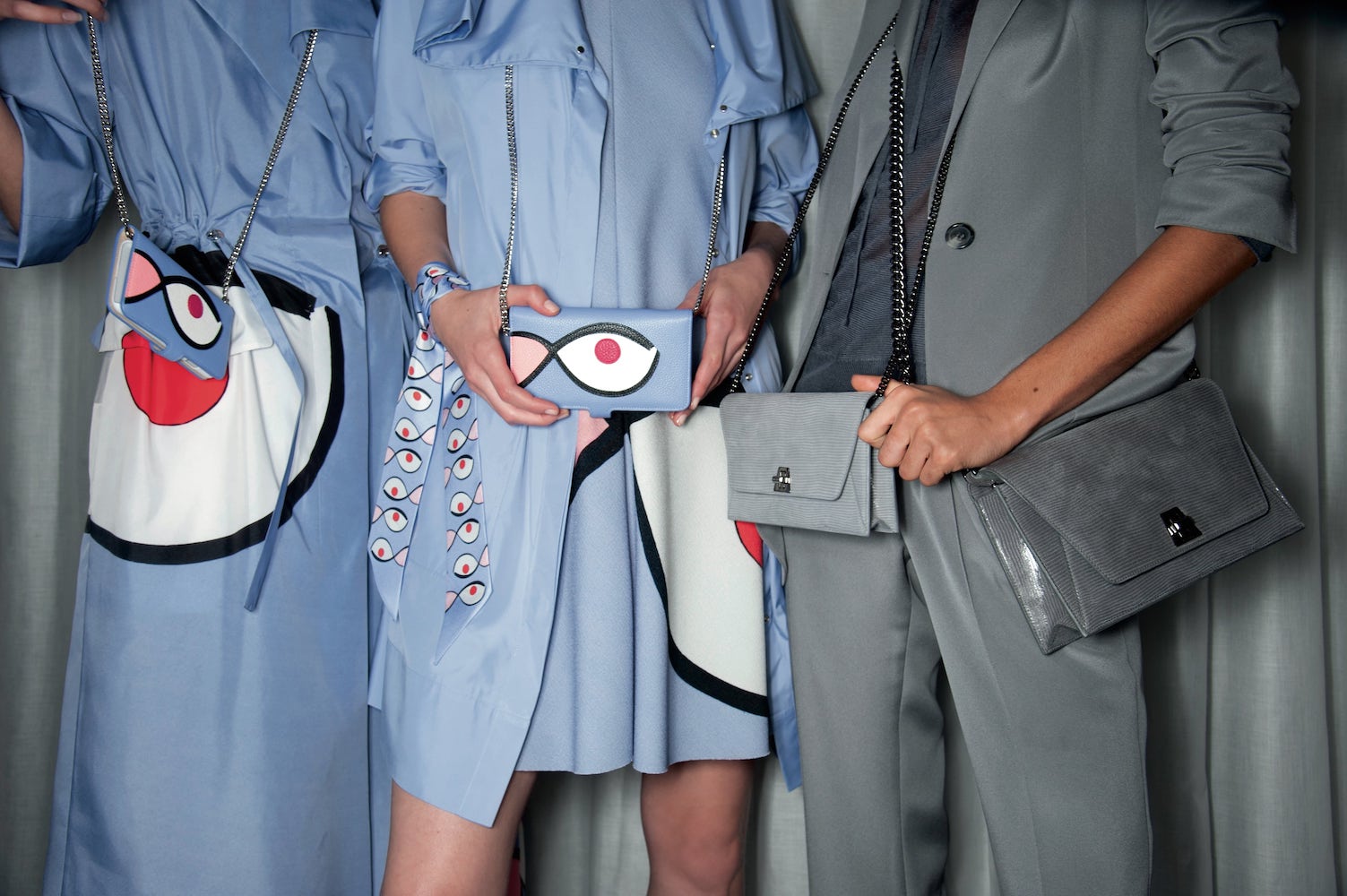
Akris, Albert Kriemler x Geta Brătescu, Wink, print, backstage shot of Spring/Summer 2019, photo © Akris.
“It’s wonderful to pause, to look back, and then ask, ‘What’s next?’ Moving forward is important to me.”—Albert Kriemler
WW: The exhibition will also showcase Akris’s technical prowess, craftsmanship, and experimentation with materials. How do you want visitors to gain a greater understanding of that side of Akris?
AK: There are some insights into craftsmanship, like horsehair, St. Gallen embroidery, digital prints, and my passion for color. For example, my development of a new color is unrelated to trend. There is just this feeling for a color and I always can find a shade which has never been produced—like the Marina Grande Blue. It was not a royal blue, not a turquoise, but Marina Grande on Capri, a wonderful blue I discovered in a film of Jean-Luc Godard, Le Mépris with Brigitte Bardot in the Casa Malaparte.
When it comes to color, I was most inspired by Yves Saint Laurent in the seventies and eighties. He was a master. I will never forget the tuxedo room at his great retrospective at the Petit Palais in 2010—a room with 25 to 30 different black tuxedos. If you have seen that, you know what tailoring can be.
But we tend to forget that the artistry of Saint Laurent was first to choose a color in the right fabric. It’s not something which is easily done, and something that is also very important to me, to find the right color for the right fabric. Nutmeg looks good in corduroy or silk but not necessarily in wool. That is why we archive samples of every Akris fabric, every new color creation. The accumulated samples are our collective memory, and a part of it will be displayed on a wall in the museum.
WW: Visitors will actually be able to try on garments. Can you tell us about this aspect?
AK: There is one room where you can touch fabrics like cashmere, and where a re-edition of the Alfa coat, our first double-face cashmere coat from Fall 1978 is hanging from size 2 to 16. Each one is in another color from beige to black. So, every visitor can try on an Akris coat and feel what it is like to wear it.
WW: That has to be a first for an exhibition, to not just “Please touch” but “Please try on”!
AK: I’m also not reluctant for people to touch. It’s not a retrospective. Clothes aren’t just standing there. We want them to be touched.
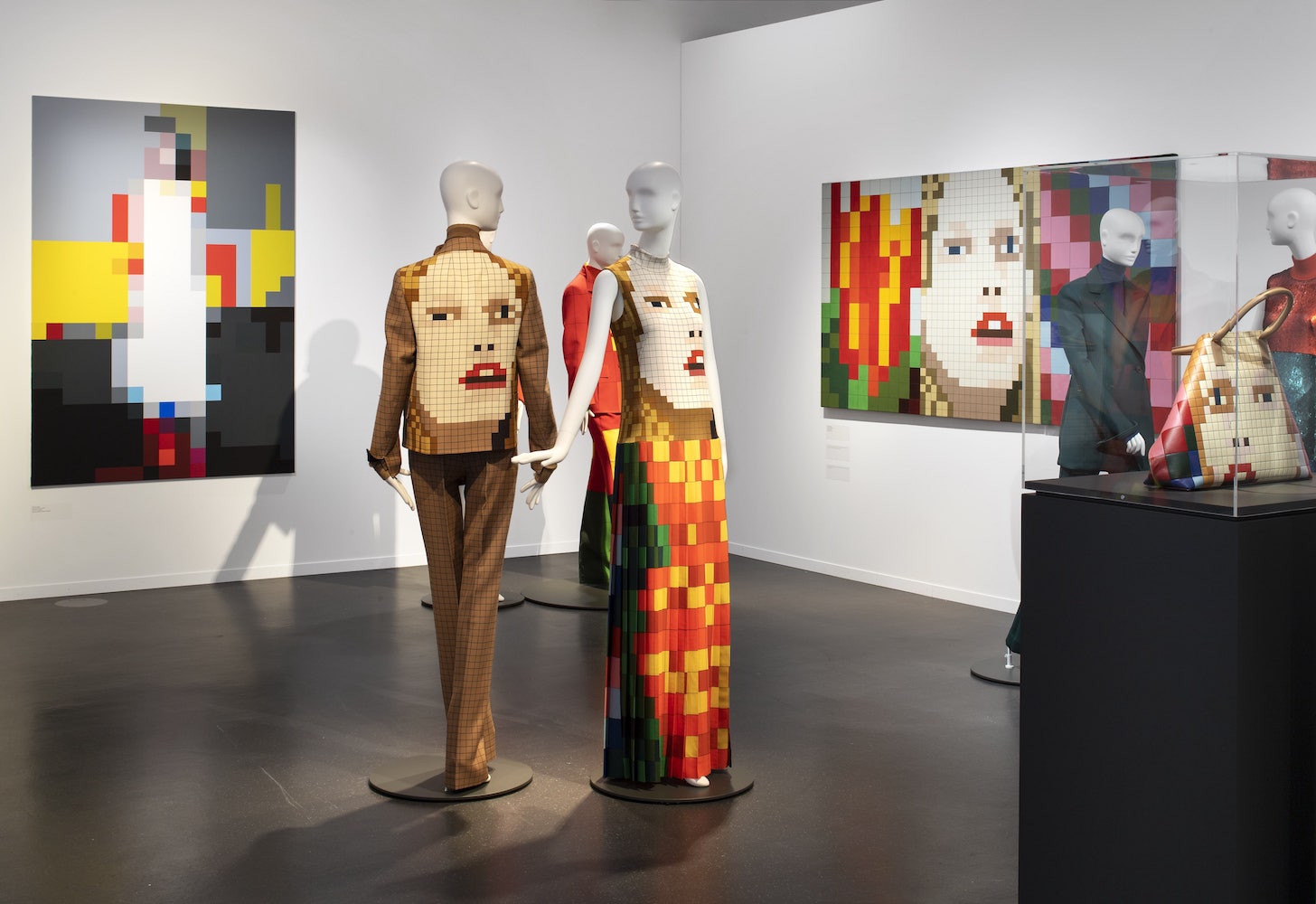
Installation view of “Exhibition Akris. Mode. selbstverständlich” at Museum für Gestaltung Zürich, May 12–September 24, 2023, photo by Regula Bearth, © ZHdK.




